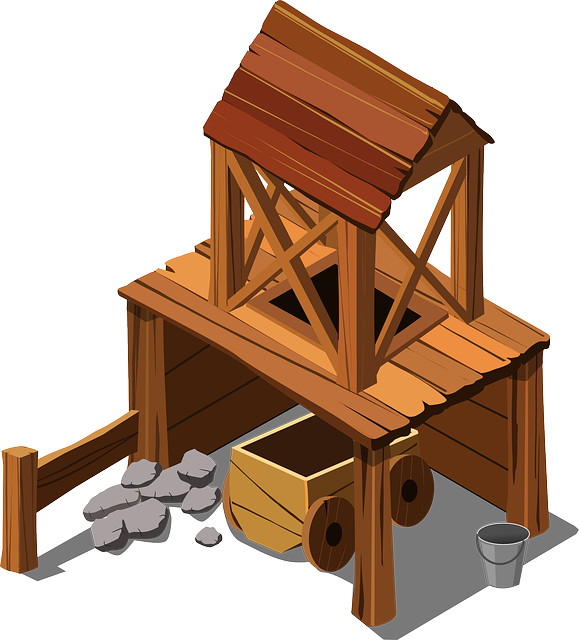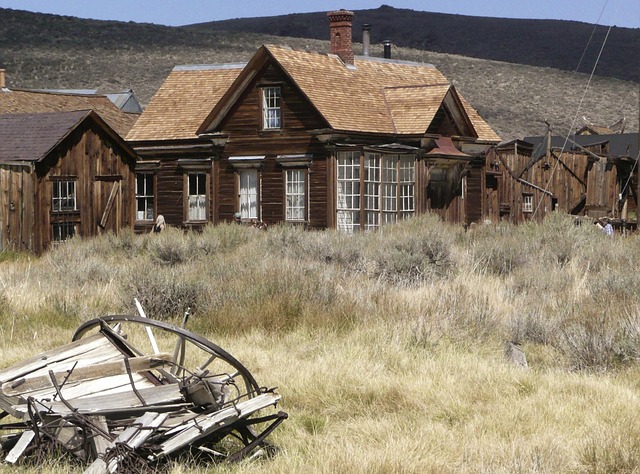In the 19th-century, Lane County, Oregon became a hub for gold miners during the state's booming gold rush. This period saw the rapid growth of boomtowns like Eugene and Springfield, fueled by innovative mining techniques and tools that extracted gold from local deposits. Despite initial success, many "boomtowns" declined as the frenzy subsided, leaving behind remnants of these historic mining communities scattered across the county. Lane County's gold rush legacy includes legal battles over land ownership, economic growth, and diverse cultural influences, shaping its rich history and modern-day attractions centered around this pivotal era.
“Uncover the captivating history of the Lane County, Oregon, gold rush era, where innovative minds and adventurous souls converged. From the allure that drew prospectors to its abundant fields to the unique tools forged during the frenzy, this period left an indelible mark on the region. Explore thriving boomtowns, delve into mining claims disputes, and uncover the long-lasting economic and cultural legacy of Lane County’s gold rush days. Discover how these events shaped a landscape and its people, leaving behind a rich tapestry of Oregon’s past.”
- The Attractive Allure of Lane County's Gold Fields: Exploring the draw that attracted prospectors to this Oregon region.
- Innovative Tools and Techniques Developed During the Rush: A look at the unique technologies and methods born out of the gold mining frenzy.
- Thriving Towns and Booming Economies: The Rise and Fall of Lane County Boomtowns: How gold rush towns flourished, and what factors led to their eventual decline.
- Mining Claims and Land Disputes: A Glimpse into Ownership Struggles: Delving into the legal aspects of mining claims in Lane County and the conflicts that arose.
- Legacy of the Gold Rush Era: Enduring Impacts on Lane County: Examining how the gold rush era shaped the region's culture, landscape, and economy long-term.
The Attractive Allure of Lane County's Gold Fields: Exploring the draw that attracted prospectors to this Oregon region.

The allure of gold has long captivated the human spirit, and Lane County in Oregon was no exception during the 19th-century gold rush. The promise of untapped wealth drew a steady stream of prospectors from near and far, all eager to strike it rich in this promising region. With its abundant natural resources and the discovery of lucrative gold deposits, Lane County became a magnet for aspiring miners and entrepreneurs alike.
The Oregon gold rush brought about significant economic growth, birthing numerous boomtowns that sprang up around mining claims. These towns, such as Eugene, Springfield, and Cottage Grove, became hubs of activity, each with its unique character and appeal. The influx of prospectors contributed to the area’s diverse population, fostering a vibrant community driven by the pursuit of gold and the economic opportunities it presented.
Innovative Tools and Techniques Developed During the Rush: A look at the unique technologies and methods born out of the gold mining frenzy.

During the peak of the gold rush in Lane County, Oregon, a unique blend of innovative tools and techniques emerged from the frenzied mining efforts. Prospectors in this region developed new methods to navigate the rugged terrain and extract precious metals efficiently. One notable innovation was the adaptation of portable rock crushers, allowing miners to process ore on-site, closer to their claims. This saved time and labor compared to shipping raw materials to distant mills.
Additionally, Lane County’s gold rush economy fueled advancements in mining equipment, such as more sophisticated pans and sluices designed to separate gold from riverbeds and gravel. The creation of boomtowns, like Eugene and Springfield, also led to the development of local industries supporting miners. These towns became hubs for blacksmiths, general stores, and suppliers who catered to the growing population and demand for specialized mining gear, further solidifying Lane County’s place in Oregon’s gold rush history.
Thriving Towns and Booming Economies: The Rise and Fall of Lane County Boomtowns: How gold rush towns flourished, and what factors led to their eventual decline.

During the Oregon Gold Rush, Lane County became a bustling hub for prospectors seeking their fortunes. Towns like Eugene, Springfield, and Oak Ridge flourished as mining communities, with saloons, general stores, and boarding houses springing up to cater to the influx of gold seekers. The economic boom attracted diverse individuals, from experienced miners to newly arrived settlers, all driven by the promise of wealth. Lane County’s prospectors staked their claims along rivers and streams, exploring vast forests and rugged terrain in search of rich veins of gold.
However, as the initial frenzy subsided, many of these so-called “boomtowns” experienced a rapid decline. Factors such as dwindling easy-to-extract gold deposits, increasing competition, and the high cost of living led to a gradual exodus of miners and businesses. By the late 1850s, many towns that once bustled with activity were left ghostly silent, their buildings falling into disrepair. Today, remnants of these historic mining communities can still be found scattered across Lane County, serving as reminders of the area’s rich—yet fleeting—gold rush era and its enduring impact on the region’s economic landscape.
Mining Claims and Land Disputes: A Glimpse into Ownership Struggles: Delving into the legal aspects of mining claims in Lane County and the conflicts that arose.

The gold rush in Lane County, Oregon, brought a surge of prospectors flocking to the region, each seeking their fortune. However, this influx led to intense competition and disputes over land ownership, particularly concerning mining claims. Lane County’s legal landscape during this era became entangled with the concept of “first come, first served,” as miners staked their claims, often resulting in overlapping territories.
These conflicts were a byproduct of the boomtowns that sprang up across the county. The economic rush led to heated debates over who held valid claims and sparked numerous legal battles. Lane County’s courts became the arena where prospectors fought for control of promising mining grounds, shaping the region’s history and leaving behind a fascinating glimpse into the complexities of gold rush economics.
Legacy of the Gold Rush Era: Enduring Impacts on Lane County: Examining how the gold rush era shaped the region's culture, landscape, and economy long-term.

The Gold Rush era left an indelible mark on Lane County, Oregon, shaping its cultural landscape and economic foundation for generations to come. The influx of prospectors seeking their fortunes led to the establishment of thriving mining towns and boomtowns scattered across the region. These settlements became hubs of activity, attracting diverse individuals from all walks of life, each driven by the allure of gold.
The enduring legacy of this period is evident in the county’s rich history and its unique cultural tapestry. Lane County’s mining claims and historical sites offer a glimpse into the past, where hard-working prospectors toiled day and night, hoping to strike it rich. The boomtowns, once bustling with miners, merchants, and settlers, now stand as charming reminders of Oregon’s gold rush days. This era also significantly influenced the region’s economy, fostering the development of infrastructure, businesses, and a robust local market centered around the mining industry.
